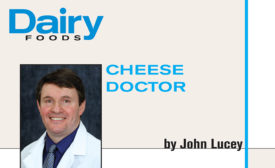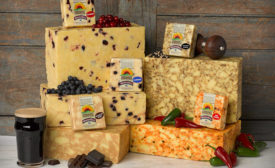Articles by John A. Lucey
New technology, like next-generation sequencing, is leading the way for a new generation of cheesemaking.
Read More
Reducing safety risks in dairy products
The industry is focusing on developing new processes and technologies that have a significant impact on safety but a minimal impact on the product.
August 8, 2017
How to avoid color defects in cheese
It’s important to understand the cause of visual defects that can occur with cheese and use appropriate preventative methods.
April 6, 2017
Understanding the basics: Techniques to attain a high cheese yield
To attain a high cheese yield, cheesemakers need to retain as much casein, fat and moisture as possible. Here are some techniques.
January 9, 2017
Understand the basics of Latin American cheese
The Latin American cheese market is growing. It’s important for cheesemakers to know the three distinct styles: fresh, melting and grating of these unique cheeses.
October 6, 2016
Dairy innovations highlight exciting possibilities
Research centers from all over are developing innovative application projects and new technologies that help us to better understand complex dairy products.
August 15, 2016
In the case of eyes in cheese, size matters
Cheesemakers need to understand fermentation and gas development to avoid defects in their cheese or when they want to create the right number and size of eyes in certain cheeses.
April 7, 2016
Stay ahead of the curve. Unlock a dose of cutting-edge insights.
Receive our premium content directly to your inbox.
SIGN-UP TODAYCopyright ©2025. All Rights Reserved BNP Media.
Design, CMS, Hosting & Web Development :: ePublishing



